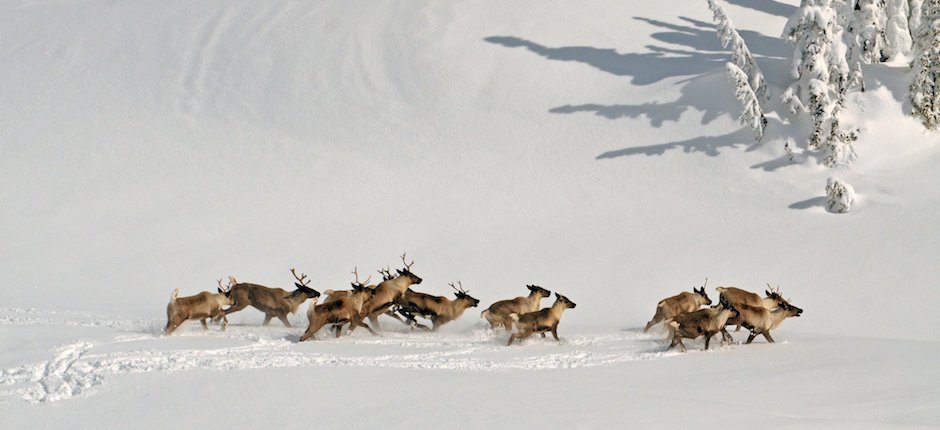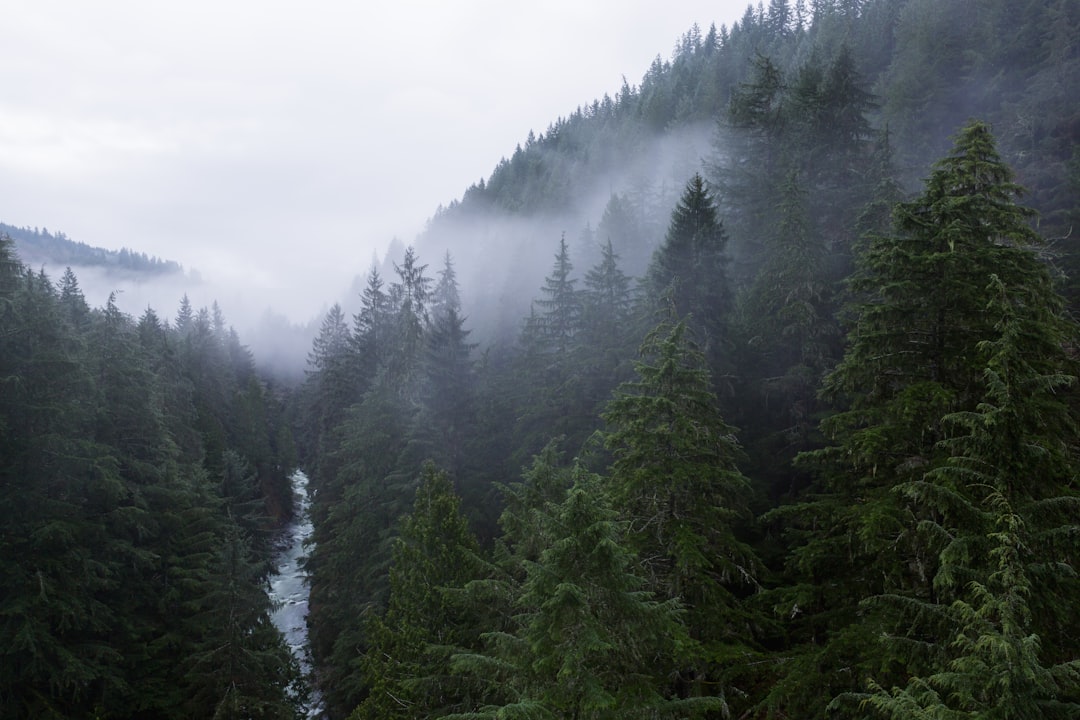Hunting Moose in Canada to Save Caribou From Wolves
Wildlife interactions are often counterintuitive. When we oversimplify these unimaginably complex systems we do things that inadvertently damage wildlife and its habitat.
NOTE: This post initially appeared on NYTimes.com on August 30, 2017
You like caribou. You like wolves. How do you preserve one without killing the other?
Research supporting an unusual conservation approach suggests that it may have something to do with hunting moose, at least in one region of North America.
Scientists spent a decade monitoring wolf, moose and endangered mountain caribou populations in the remote rain forests of southern British Columbia. In a study published Tuesday in the journal PeerJ, they found that if you let people hunt more moose, you get fewer wolves and more caribou. While this approach may only be part of the solution for preserving the caribou, it illustrates the complexity of conservation in natural environments.
“The band-aid solution is killing wolves, but that’s been treating the symptom,” said Robert Serrouya, a biologist at The University of Alberta who led the study. “We’re trying to deal with the cause.”

And that cause is part of a counterintuitive narrative that goes like this: when a nonnative species wanders into a new place, its predators follow. The nonnative species knows how to fight or avoid its predators, and is good at reproducing. But for native species that evolved without worrying about the new predators, and are less fecund, it’s a big problem.
That’s what happened in the Channel Islands off California when pigs brought by humans attracted eagles that started preying on native foxes. The Canadian caribou tale is more indirect: Climate change, extensive wolf control in other areas and logging in British Columbian rain forests — which left decades worth of shrubby moose food in place of ancient trees — encouraged the moose to expand its territory. They traveled from their flat boreal forests homes to the rugged rain forests in southern British Columbia and Idaho where mountain caribou live. Wolves followed and started preying on the native caribou.
First Nations people in Canada who are native to the mountains where this study took place don’t even have a word for moose, said Dr. Serrouya. The animals may have never lived there. But today moose outnumber white-tailed deer (which are also invading) around 16 to one — and both outnumber mountain caribou.
To reduce moose numbers, the government of British Columbia increased hunting permits in 2003 by tenfold in a 2,500-square-mile area in the Columbia mountain range. The researchers compared what happened there with a nearby area to the west separated by mountains. It had a similar climate and ecology but no increased hunting. The scientists asked: Could sport hunting alone reduce the moose population to its historical level of few to none? Would that reduce wolves as well, relieving pressure on the mountain caribou? And would that help restore the caribou populations from near extinction to something sustainable?
Over ten years of monitoring the movements, survival and reproduction of the animals, the scientists found that extra moose hunting, even in this remote area, was enough to reduce the moose from around 1700 to just 300 or 400. It also reduced the wolves, which dispersed from the area and had fewer babies. The survival rate of the largest caribou subpopulation increased enough to stabilize in the hunting area, but continued to plummet in the area where hunting was not allowed to increase.
A similar approach was used in California to save those Channel Island foxes: killing feral pigs had an effect on the golden eagles that were hunting the foxes.
But moose control may not by itself be enough to save caribou in some circumstances. In one small group of caribou with fewer than 50 animals, the population did not stabilize. This suggested to Dr. Serrouya that without the social benefits of big group living (like extra eyes to watch for predators), the mountain caribou were vulnerable to additional pressures like random catastrophes, inadequate food or predation by cougars and bears. He thinks to truly restore mountain caribou populations, a more nuanced, multifaceted approach is necessary.
“It’s not up to me to decide what goes extinct or not,” said Dr. Serrouya. “But personally, if we can prevent extinction, and if we caused or are contributing to that, then sure — it’s a good thing to do.”
Correction: September 5, 2017
Using information from a journal, a picture in an earlier version of this article had an incorrect credit. The photo was taken by Robert Serrouya, not Hans Mohr.



